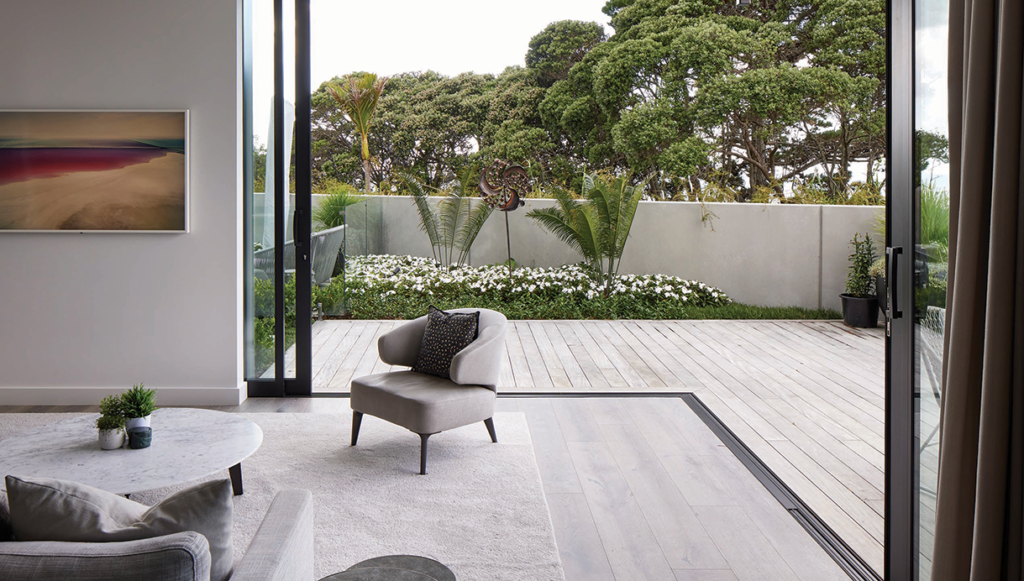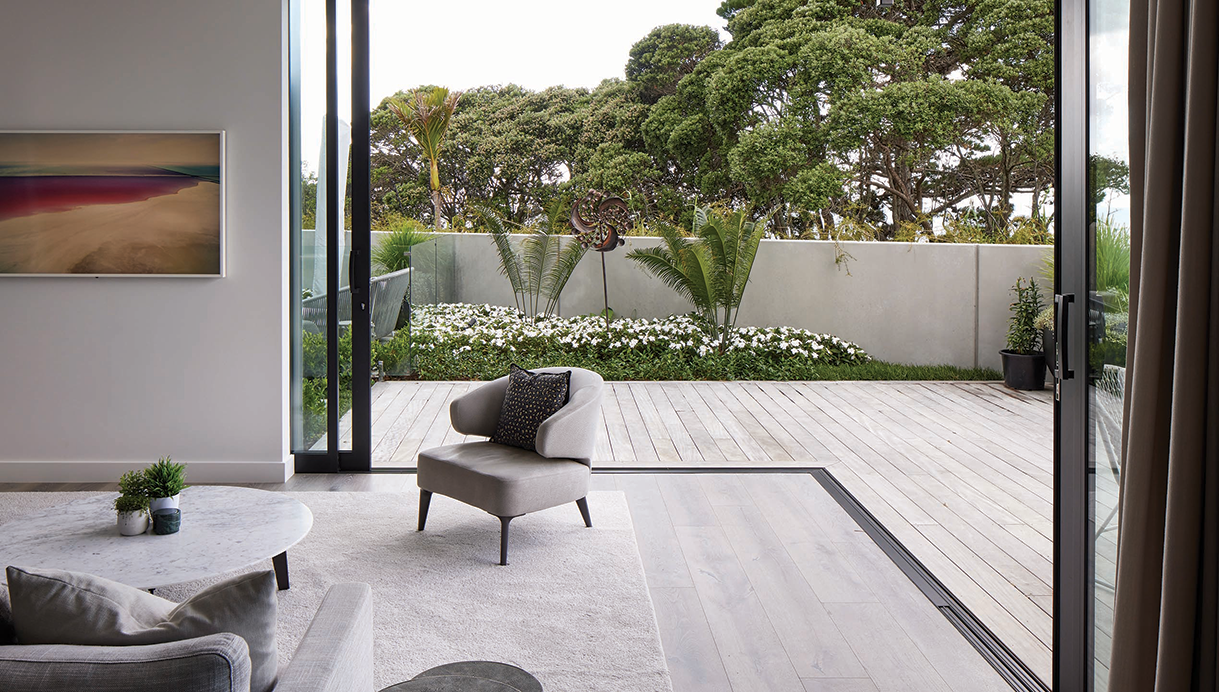Stepping or moving across door sills and thresholds has long been an area of focus for designers and manufacturers who want to make doorways as user-friendly as possible for senior citizens and those living in aged care facilities.

Eliminating tripping hazards and making movement easier for people with wheelchairs or walking frames is part of a whole complex of design and construction considerations to enhance living for the elderly and future-proof structures for changing life conditions.
As the largest window and door systems company in New Zealand, APL Window Solutions has taken on board this common sense imperative both in product design and, more recently, in a research project with Massey University’s School of Engineering and Advanced Technology[1]. Massey undertook a study that observed and recorded ease or difficulty of access for elderly people moving across different types of door thresholds featuring up-stands or ramps that had to be negotiated. This project was designed to feed into APL’s design development for flush thresholds for its different door products.
Difficulty experienced correlated with walking aid type and height of up-stand or ramp that had to be crossed. Familiarity with difficult access-ways involved pre-planning or walk-arounds to make second or future entries easier. For some entrances with a significant change of level (e.g. 25mm-70mm) the time taken to cross the threshold for people in wheelchairs could range from 10 – 20 seconds.
A questionnaire survey [2] was also undertaken at an aged care institution covering issues related to accessways. Common coping strategies for residents involved avoiding certain doors entirely or asking for assistance. More than 60 per cent of respondents were either very or extremely concerned at raised thresholds.
APL, proprietors of the Altherm, First and Vantage brands of windows and doors, have a flush threshold for sliding doors and are in the final stage of development for flush thresholds for hinged doors. Aluminium profiles for door sills must balance weathering and drainage issues when fine tuning final designs for flush, inside-to-out levels.
Other measures recommended by APL for age-proofing residences, are the use of door and window hardware items that are robust and straightforward to operate, especially for people with weak wrists and arthritic fingers, e.g. self-latching sliding door locks and Urbo Helix window fasteners with no visible flap or wedge that might intrude when opening and closing a window.
Ventilation can sometimes be a problem in homes occupied by the elderly. A need to maintain a high interior temperature for householder comfort can often conflict with optimum ventilation requirements. A practical trade-off can involve the use of passive ventilation options, such as Sashvent, Aerovent and Ventient. These are window add-ons that provide a continuous background air entry at levels unlikely to cause discomfort from open windows, while still achieving the frequent ‘air changes’ required for occupant health.
Want to find out more about window and door solutions for aged care? Register now for APL’s free face-to-face or online presentation, aimed at designers and those interested in aged care window and door solutions: aplnz.co.nz/aged-care.
APL products are exclusively available from our Altherm, First and Vantage manufacturers nationwide.

References:
[1] Young, G., Santos, J., Irani, P., & Thomson, N. (2017). Level Entry Waterproofing.
[2] Nguyen, A., Jackson, J., & Woods, N. (2017). Navigating Door Thresholds in Rest Homes. APL/Massey University Aged Care Facilities Research.









